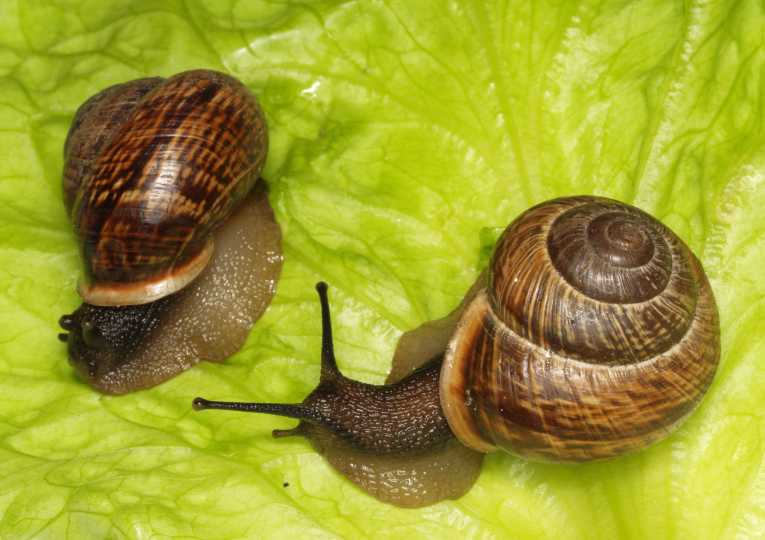With stripy shells that are a vibrant multitude of pinks and yellows and browns, the banded snails, or Cepaea, are often seen brightening up the garden like little spirals of humbug. And it is their stand-out quality and appeal makes them ideal candidates for studying evolution 'as it happens'. They literally display their genetic wares on their backs – in the various colorings and patterns of their shell. Today, one of the biggest studies of evolution on-the-go - Evolution Megalab - is publishing the results of its year long odyssey to get the public's help in mapping out the evolutionary change of banded snails across Europe.
These colorful snails are the back yard's waste collectors, focusing their rasping tongues on the consumption of dead and decaying vegetation, as well as algae and plants. But in order to avoid predation from song thrushes, magpies, rats and mice – not mention glow worms! – banded snails are constantly adapting their shell markings to blend in with their environs.
That made them a great subject for this continent-wide study, which was put together by the UK's Open University, the Royal Society and the British Council, in order to mark the 200th anniversary of Charles Darwin's birth. They were wondering whether factors such as climate change, declining predator populations or indeed other environmental factors, might be driving evolution that the public could see in their bright shells.
The data collected by 6,000 members of the public has been compared to the long-term sighting information recorded from the 1950's to 1990. Now the results from Evolution Megalab are in, and have been published today in the journal PloS One. And the snails have tracked over several evolutionary paths for the last 5 decades - some expected, and others more bemusing.
One clear climate-change driven adaptation is thinner shells. Rising temperatures appear to have caused those banded snails that live in heat-trapping sandy-dunes, to develop lighter shells. That presumably helps to protect them against overheating. But a less expected, but quite striking, change is an significant increase in the numbers of single-banded snails. It could be that these snails have gone 'simple on the stripes' because of there are fewer thrushes predating on them – but scientists aren't really sure.
But the most important result from the snail survey-of-the-century is probably pulling of the public into exploring the fascinating world of the evolution. The author of the report summarizing the study, Professor Silvertown, said ''This is one of the largest evolutionary studies ever undertaken. Through mass observation we wanted to give the general public, including families and school children, the opportunity to do real science and to experience the fun and excitement of discovery for themselves. Finding unexpected results is what science is all about.''










